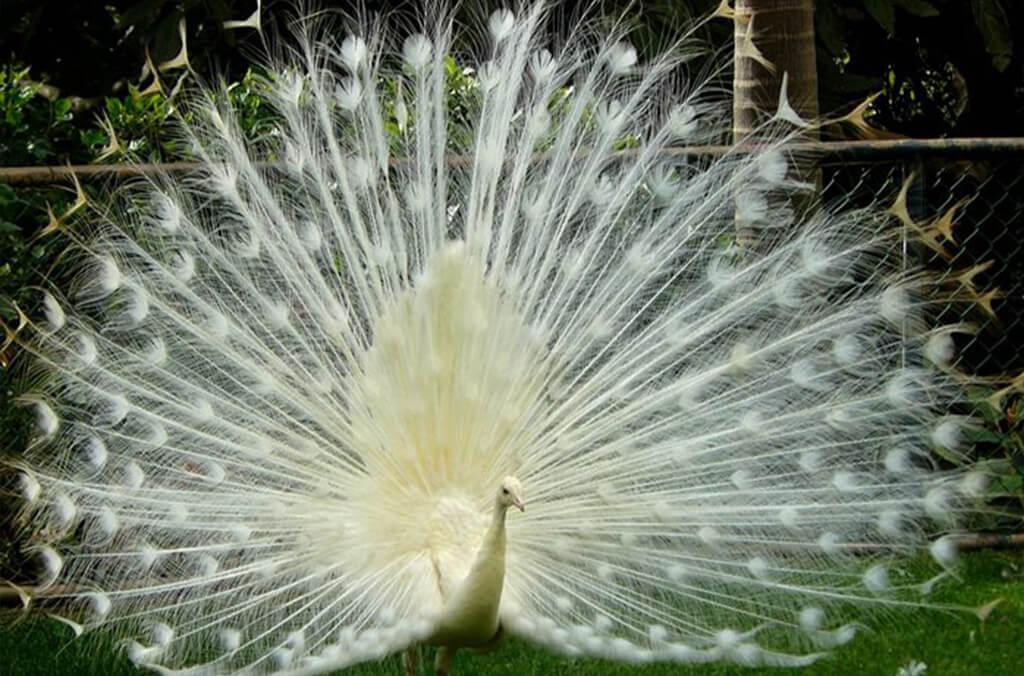Do you know what this extremely rare bird is?
Recently a bird in the Royal Botanic Garden Sydney has become popular with many visitors and staff taking notice of its unique features. While it hops around the harbour and struts through the grassy lawns of the Garden, this spotted bird has left many of us asking, “Is it a Magpie?” “Is it an albino Raven?” “Is it unique?”

So what is this funny fowl?
The extremely rare bird stands out from the rest because of its near colourless plumage and yellow eyes. Generally, a mostly black bird with small patches of white confined to the undertail, this pretty Pied Currawong is certainly a sight to see due to it having leucism.
We called on our wildlife expert, Dr. John Martin, who quickly identified this unusual bird and filled us in on why this Pied Currawong is different. “Leucism is often mistaken for albinism because it looks like there isn’t pigmentation or melanin present, but the difference is that traces of colour are present.
This Pied Currawong is rare because it has leucism but still has small patches of coloured feathers and yellow eyes. The plumage has a washed-out appearance instead of a complete lack of colour like an albino bird.”
“Pied Currawongs tend to stay in the same areas year-round so it’s likely visitors have seen it before, but because it is currently breeding season for the species, sightings have increased over the past few weeks.”
Dr John Martin
What is a Pied Currawong?
Found throughout eastern Australia and commonly mistaken for a Magpie, the Pied Currawong is a vocal bird known for it’s distinctive “curra-wong” call. They have a range of vocalisations including deep gurgles, a chorus of whistles and a ringing tune.
These birds have adapted well to living in urban areas but naturally occur in open woodlands, which is why this bird calls the Garden home as it forms an urban open woodland.

An all black Pied Currawong without leucism.
What is leucism?
Although this rare genetic condition makes animals look different, leucism is just a reduction of skin pigment and doesn’t harm their wellbeing. In fact, they can lead normal lives like the white squirrel who was seen collecting nuts in England. Or the remarkably pale giraffe that lives in Tanzania's Tarangire National Park. This year we have observed this leucistic Pied Currawong to breed and now it is currently feeding two large chicks that recently fledged.

Mammals can have leucism too, look at this reindeer and peacock. 
A leucistic peacock showing off his white feathers.

Puzzled visitors took images of the odd looking bird.